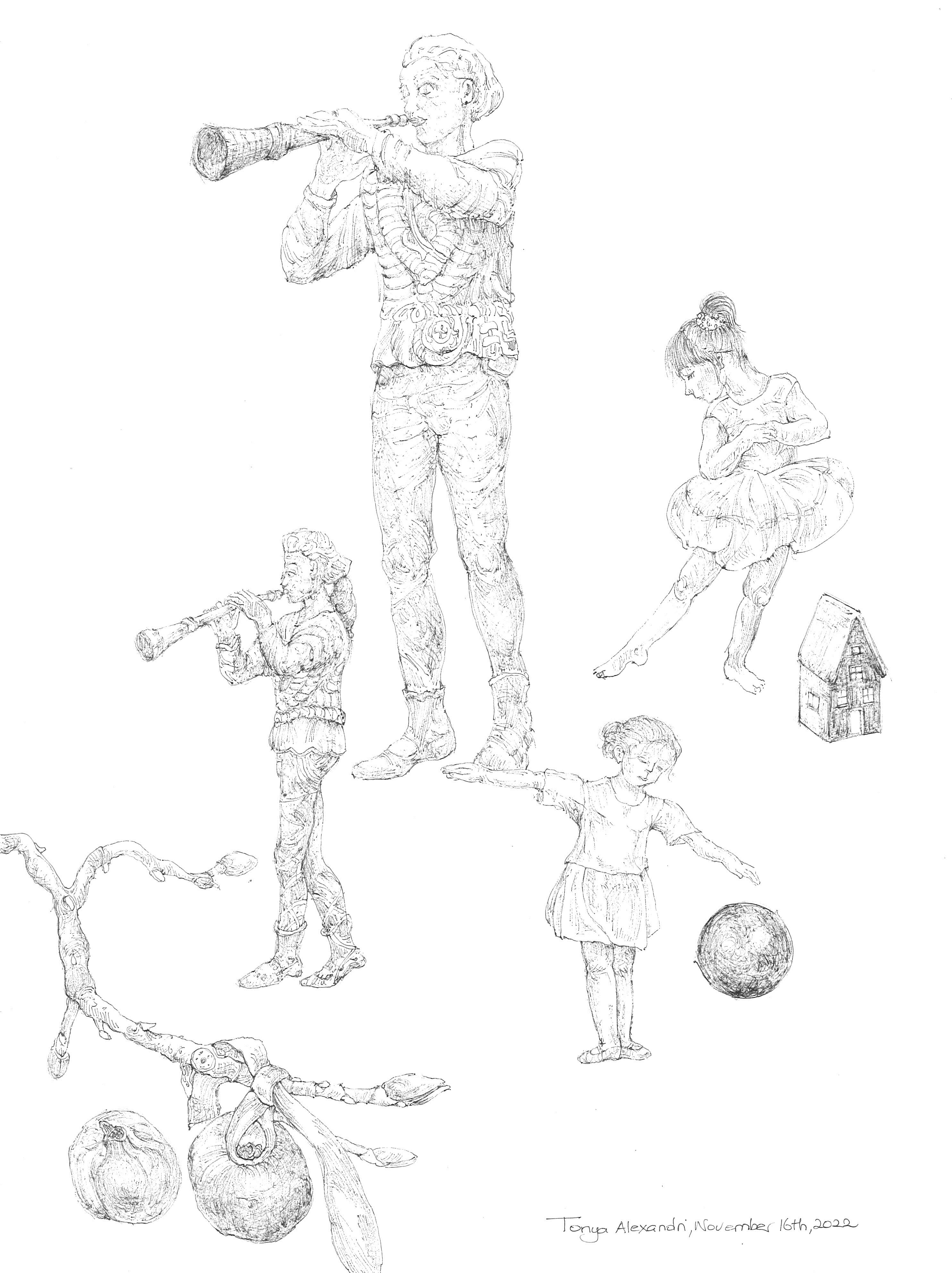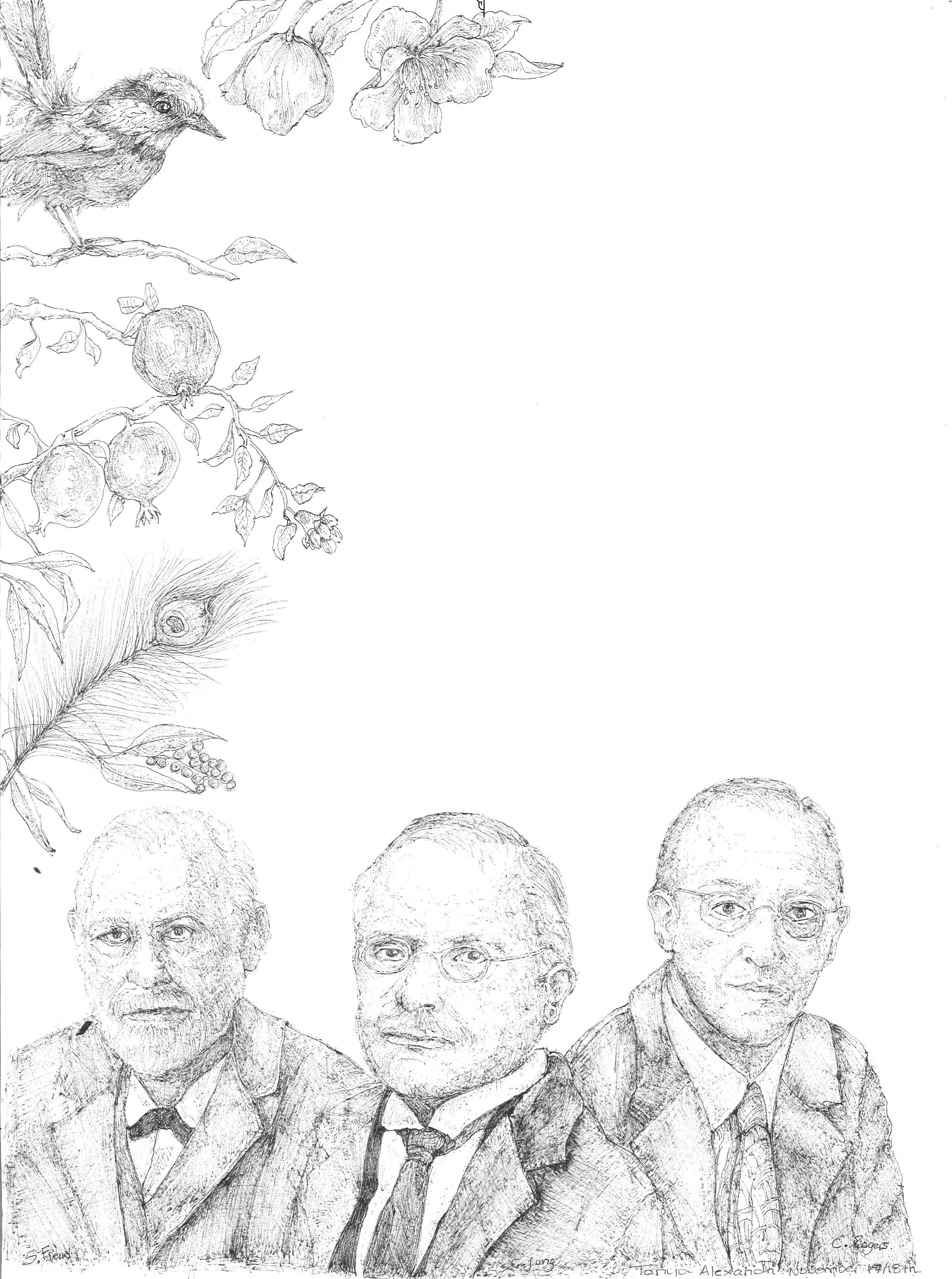Compassion, a few more drawings, several related quotes and the roles we play….
“Compassion starts coming to us because we have the aspiration to do the practice and to get more in touch with our own pain and our own joy. In other words, we are willing to get real.” From Start Where You Are by Pema Chödrön
“Sometimes people don’t trust the force of kindness. They think love or compassion or kindness will make you weak and kind of stupid and people will take advantage of you; you won’t stand up for other people.” Sharon Salzberg
“We can learn the art of fierce compassion – redefining strength, deconstructing isolation and renewing a sense of community, practicing letting go of rigid us-vs-them thinking – while cultivating power and clarity in response to difficult situations.” Sharon Salzberg
“One’s life has value so long as one attributes value to the life of others, by means of love, friendship, indignation, and compassion.” Simone de Beauvoir
“We can embrace kindness and compassion, fairness and justice, honesty and integrity, not as imposed obligations to which we must conform, but as qualities which enrich our lives and our relationships with others.” Alice Roberts and Andrew Copson
“Dance, when you’re broken open. Dance, if you’ve torn the bandage off. Dance in the middle of the fighting. Dance in your blood. Dance when you’re perfectly free.” Poem by Rumi


Today I was planning to write something on meditation [I’ve been meaning to do that for quite some time now], but I ended up writing a bit more about compassion because there are so many different angles to approach it and I felt I needed to add a few more points to the previous post. I’ve also included some more artwork, a mediation practice, and an introduction to a podcast about the roles we play in life, the ones we choose and the ones we are sucked into.

α) Ι ended the previous post with a self-compassion meditation by Dr Christine Neff, whose work focuses on compassion turned inwards. This kind of compassion requires we are kind and accepting rather than harsh and critical towards ourselves, especially when things don’t go our way, when we feel we have failed, when we are in pain or when we face difficulties. Self-compassion is basically acting the same way towards our self when we are suffering or having a difficult time as we would to a friend.. Instead of mercilessly judging and criticizing ourselves for our human limitations, mistakes or shortcomings, we honor and accept our humanness. Neff writes: “This is the human condition, a reality shared by all of us. The more you open your heart to this reality instead of constantly fighting against it, the more you will be able to feel compassion for yourself and all your fellow humans in the experience of life.”
Neff claims that compassion for oneself is no different than having compassion for others. She writes “…to have compassion for others you must notice that they are suffering. If you ignore that homeless person on the street, you can’t feel compassion for how difficult his or her experience is. Second, compassion involves feeling moved by others’ suffering so that your heart responds to their pain. When this occurs, you feel warmth, caring, and the desire to help the suffering person in some way. Having compassion also means that you offer understanding and kindness to others when they fail or make mistakes, rather than judging them harshly. Finally, when you feel compassion for another (rather than mere pity), it means that you realize that suffering, failure, and imperfection is part of the shared human experience. There but for fortune go I.” Pema Chödrön similarly suggests that “It is unconditional compassion for ourselves that leads naturally to unconditional compassion for others. If we are willing to stand fully in our own shoes and never give up on ourselves, then we will be able to put ourselves in the shoes of others and never give up on them. True compassion does not come from wanting to help out those less fortunate than ourselves but from realizing our kinship with all beings.”
Neff distinguishes three elements of self-compassion. The first involves being kind to oneself and acknowledging that being imperfect, failing, and experiencing life difficulties is inevitable. When we resist this truth our suffering increases. The second is being aware of our common humanity. This involves recognizing the reality that all humans suffer and make unwise decisions at times. Neff writes: “The very definition of being “human” means that one is mortal, vulnerable and imperfect.” The third element involves mindfulness, which Neff describes as a non-judgmental, receptive mind state in which one observes thoughts and feelings as they are, without trying to suppress or deny them. It is not possible to be in denial or to push aside our emotions or pain and be compassionate. Compassion requires we are present to our own or others’ emotions and pain.
Neff also discerns fierce and tender compassion. In certain situations tenderness and acceptance are not appropriate and the right thing to do is to act fiercely, to set boundaries or stand up for our self. She claims that it can help women in the workplace and in relationships to succeed and set boundaries, and also break the silence about abuse, harassment and discrimination. Neff writes: “Tender self-compassion involves “being with” ourselves in an accepting way: comforting ourselves, reassuring ourselves that we aren’t alone, and being present with our pain or discomfort.” On the other hand, fierce self-compassion involves protecting, providing and standing up for our self, saying no and setting boundaries. She says “If tender self-compassion is metaphorically like a parent soothing his crying child, fierce self-compassion is like Momma Bear who ferociously protects her cubs when threatened, or catches fish to feed them, or moves them to a new territory with better resources.”
Women have through time been discouraged from developing the capacity to be fierce, and therefore, they need to reclaim it in order to both protect themselves and to create a healthier society. In general most cultures and society at large have not thus far focused on self-compassion and it is not something that has been encouraged. But practising and accessing self care, joy and self compassion are ultimately acts of resistance and survival. Self compassion like self care and joy need to be reclaimed and practiced if not for our greater well being than at least for our own survival and wellness. Over the last few days I’ve been listening to talks from the JOY summit, where speakers mentioned that it is strategic to cultivate joy and that it is revolutionary and a measure of freedom. Similarly, self care and self compassion, especially for women, can be acts of resistance and honoring our right to be here, a process of becoming real and moving out of a doll state like existence. Patriarchy does not encourage these capacities in general, especially in girls, where often the belief has been that girls are destined to be the care takers of everyone, the ones to do the emotional labor of the family system, for instance, the ones to absorb the wounds of the group, the empathic containers of everyone’s discomfort or dysfunction.
Dr Dan Siegel discusses compassion in his book AWARE. In brief he begins by mentioning that research on mind training suggests that the three factors: focused attention, open awareness, and the training of compassion, or what he calls kind intention, are some of the core ingredients of how we can create well-being and happiness in our lives. Kind intention: is the ability to have a state of mind with positive regard, compassion, and love internally (what is sometimes called “self” compassion, which he prefers to call “inner compassion” and compassion towards others, which he prefers to call “inter compassion”. Dan Siegel writes: “This research suggests they each complement each other and support the movement toward well-being in the body and its brain, our relationships with self and other, and our mental life of attention, feelings, thoughts, and memory.” He also mentions something that most people know and that is that in the various religious and wisdom traditions throughout the world compassion is considered one of the highest values that enhance well-being in both the individual and the community.
In the previous post I referred to the difference between empathy and compassion. Dan Siegel writes that the perception of suffering in another requires a process called empathy, which can be viewed as having at least five aspects: feeling another’s feelings, seeing through the eyes of another, cognitive understanding caring about the well-being of others, and sympathetic or empathic joy (feeling happy about another’s happiness or success). He suggests that empathic concern can be seen as the gateway for compassion and that compassion may not be possible without empathy that enables us to tune in to the inner life, the emotions and subjective experience, of others. He also refers to the social neuroscientist Tania Singer, who has found that over identification with the emotional state of another person can lead to empathic distress; however, it is suggested that when emotional resonance is coupled with compassion, the individual can more easily retain a sense of balance and equanimity.
He writes: “Empathic resonance alone— feeling the suffering of another without empathic concern and compassion, and without the ability to skillfully differentiate oneself from the suffering of others— can lead to burnout. That is a potential downside to being tuned in to others without proper training in resilience— without the ability to be both linked and differentiated. In other words, we risk over-identifying and shutting down if integration is not maintained.” In the late 50s Carl Rogers also recognized the need to not over identify. He wrote: “The state of empathy, or being empathic, is to perceive the internal frame of reference of another with accuracy and with the emotional components and meanings which pertain thereto as if one were the person, but without ever losing the ‘as if’ condition. Thus it means to sense the hurt or the pleasure of another as he senses it and to perceive the causes thereof as he perceives them, but without ever losing the recognition that it is as if I were hurt or pleased and so forth. It this ‘as if’ quality is lost, then the state is one of identification (Rogers, 1959)
b) A compassion for self and others meditation / practice from Chris Germer’s website at: https://chrisgermer.com/wp-content/uploads/2020/11/Compassion-for-Self-and-Others-16-min.m4a

c) I’d also like to share a recent Being Well podcast at: https://www.youtube.com/watch?v=M5gtWmukenY, in which Dr Rick Hanson and Forrest Hanson discuss the roles we play and the importance of being aware of the ones we get sucked into by others and the ones we consciously choose ourselves.
They discuss the roles we take on and how they shape us, the conscious and often unconscious reasons we take on roles and how we can end up crippled even by our strengths. For instance, we may be good planners or empathic listeners, but we can end up over extending ourselves. Rick Henson sums up ways for disengaging from problematic roles and drawing healthy boundaries. They refer to Sigmund Freud and some of his outdated or problematic theories, Carl Jung and Carl Rogers, object relations theory and psychoanalysis and issues that can arise during therapy. They explore concepts like enactment, splitting, triangulation, deep empathic listening and more.
In brief, enactment, is the acting out or unconsciously recreating the dynamics of early relationships in current contexts, including therapeutic contexts. Unexamined early experience or unhealed traumas and the ensuing emotions are misplaced on current relationships. Splitting is the tendency to view a person or situation as either entirely good (idealization) or entirely bad (devaluation). Splitting is a defense mechanism and it is normal in childhood. Ideally, as we go through the developmental stages we gain the capacity to perceive ourselves and others as complex beings with contradictions and both positive and negative attributes. Unfortunately, for many people healthy development is disrupted through trauma and social conditioning.
Triangulation is also discussed. Forrest refers to Family Systems Theory, which includes ideas about how families and organizational units function as contained systems with interactions that are governed by sets of rules. Rick and Forrest also provide examples of what might happen in families or in friend groups. Triangulation, which I’ve written about in previous posts in relation to narcissism, takes place when two members of the triangle unite against the third one. These shifts and alliances reflect relational power dynamics. Being aware of the process of triangulation is important, in parenting and in sustaining more reciprocal and less imbalanced relationships.
Finally, they refer to Carl Rogers, the founder of the humanistic movement in psychology and creator of the client-centered therapy. In relation to empathic listening Carl Rogers said “So, as you can readily see from what I have said thus far, a creative, active, sensitive, accurate, empathic, nonjudgmental listening is for me terribly important in a relationship. It is important for me to provide it; it has been extremely important, especially at certain times in my life, to receive it. I feel that I have grown within myself when I have provided it; I am very sure that I have grown and been released and enhanced when I have received this kind of listening.”
